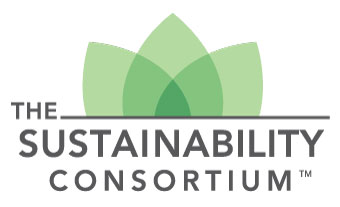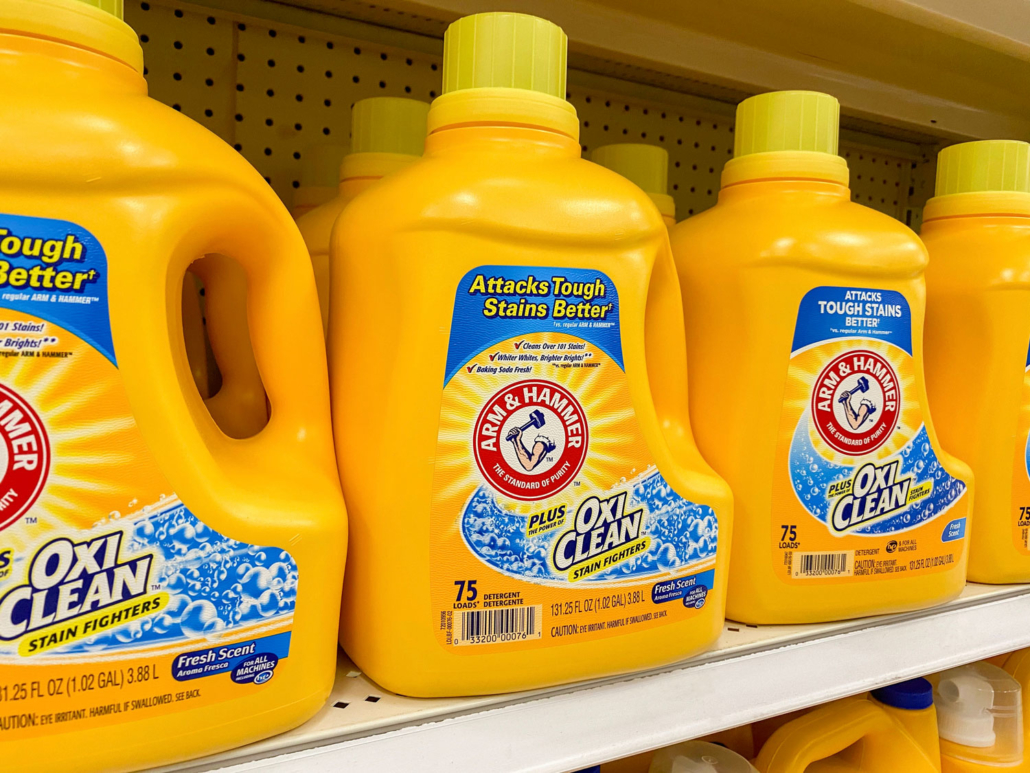This support is most recently evidenced in the United States by the Sustainable Chemistry Research and Development Act2 which became law on January 1st, 2021 and will coordinate federal programs to better drive green chemistry
a
Increased consumer awareness and demand for safer chemistry is driving more progressive chemistry policies among retailers, brands, and NGOs, as well as a projected $50 billion growth between 2019-20231 for green chemicals. Additionally, governments increasingly recognize green chemistry as a powerful tool to drive sustainability and are passing legislation that empowers market use. This support is most recently evidenced in the United States by the Sustainable Chemistry Research and Development Act2 which became law on January 1st, 2021 and will coordinate federal programs to better drive green chemistry. In the consumer product space, concern for safer chemistry is primarily related to the use phase of these products as emerging studies are linking certain chemicals to toxicity endpoints like carcinogenicity, irritation, neurotoxicity, pulmonary toxicity, and endocrine disruption3.
In this report, we use 2019 data from THESIS to assess how well brand manufacturers in different Home and Personal Care product categories are achieving safer chemistry in their products. We will examine six categories: Air Fresheners, Cleaning Wipes, Dishwashing Products, Household Cleaning Products, Laundry Detergents and Fabric Softeners, and Fabric Care Products.
Ingredient Disclosure to Consumers
In the last decade, ingredient disclosure has been driven by brands and retailers responding to health-conscious consumers and governments creating disclosure policies. For example, in 2001, multiple states in the U.S. created disclosure requirements for products containing mercury4. In 2017, the state of California passed the “Cleaning Product Right to Know Act”, a law that requires cleaning products to disclose certain substances on both product label and manufacturer website if they are present in the product above 100ppm5. In 2018, the state of New York followed with a similar policy.
Perhaps reflective of how cleaning products were the focus of both California and New York’s disclosure laws, the majority of Dishwashing Products, Laundry Detergents and Fabric Softeners suppliers are disclosing their ingredients to consumers online or via telephone, on-label and/or include disclosure on ingredient functionality. In categories less impacted by legislation, however, ingredient disclosure to consumers is relatively common. This indicates that even without a regulatory requirement many brands see an opportunity to lead by meeting the transparency desires of their most sustainability-minded consumers.
Beyond Ingredient Disclosure to Consumers
While ingredient disclosure to consumers is an important step towards a more sustainable product, there are three other practices that are essential to ensuring safety for human health and ecosystems. These are:
- Ingredient disclosure to manufacturers: Product manufacturers should obtain full ingredient information for the raw materials they incorporate into products, ensuring no hazards are unknown.
- Risk assessment and product safety: Once hazards are determined, product manufacturers should scientifically understand product-specific exposure scenarios and determine safe use practices for consumers.
- Chemical footprints: Product manufacturers should employ a formal methodology to measure and track chemical-intensive impacts for their respective products and supply chains.

By balancing efforts in these areas, suppliers can ensure that individual consumers, and the overall ecosystem, are safe. In the next three sections we will examine how well brands are performing on these three issues. One overall conclusion from all three sections is that brands in the Dishwashing Products category tend to perform as good or better than personal care products.
Ingredient Disclosure to Manufacturers
Safety starts with knowing what is in a product. To ensure that their products are safe when used, manufacturers need detailed and vital information from their raw material suppliers on the composition of the raw materials they procure. With the right information in hand, brands can determine what chemicals they would like to include or exclude from products, and which chemicals consumers can use in products with minimal risk. Some THESIS KPIs track activities or attributes for a specific set of chemicals referred to as “chemicals on the stewardship list”, which was created by TSC and stakeholders. The stewardship list references the smallest number of authoritative and regulatory lists that cover US retailer chemical policies. This allows TSC, retailers, and brands to track progress on the chemicals that are most important to the value chain.

Figure 1 summarizes THESIS 2019 performance on the topic of ingredient information requested from raw material suppliers. Response options are listed in decreasing order of aspiration (i.e., higher rows require more detailed information) and the heat map shows the percentage of suppliers that were able to respond at each level per category. Here darker green is better and darker red is worse. Note that Dishwashing Products outperforms other categories by requiring the basic activity of identification of chemicals on the stewardship list for all raw materials procured, 88% of suppliers used this approach. Broader industry performance reveals that most brands in the other categories struggled to obtain the highest level of ingredient detail from their suppliers. This means that the industry is falling short on requiring detailed information where reasonably expected chemicals may be present (i.e., companies aren’t looking for known contaminants or expected reaction byproducts in procured raw materials).
Chemical Footprint
Achieving individual product safety requires knowing which ingredients are hazardous under certain conditions. Calculating the chemical footprint for an entire organization allows companies to understand their role in the market and the steps needed to reduce their chemical impact in supply chains. Knowing their impact allows companies to act. When companies know their chemical footprint, they can prioritize which products and ingredients require safer alternatives and which suppliers may provide suitable substitutes.
The Chemical Footprint Project is a progressive and ambitious initiative established by Clean Production Action. It helps manufacturers track the total mass of chemicals with known hazards supplied from their upstream supply chain and sold to downstream customers. Collaborating with others in this space synergizes efforts and aligns organizations around a common vision that drives safety and sustainability. Public disclosure of chemical footprints allows consumers to make informed choices about their purchases and builds trust with brands.

Chemical footprint disclosure means that companies publicly release the total mass of chemicals sold by their company, used in their manufacturing operations and by their suppliers, and contained in packaging that meet certain hazard criteria. Figure 3 summarizes THESIS 2019 performance on the topic of chemical footprints. Like other sustainability performance measurements, companies are achieving basic activities like internally measuring their chemical footprint, but they are not externally collaborating or publicly disclosing their results.
In conclusion, companies are increasingly implementing practices towards safer products. While laws around ingredient disclosure have driven some of this, THESIS data shows that many companies go well beyond “compliance” in terms of their practices around risk assessment, product safety, and chemical footprinting. For example, ⅕ to ½ of suppliers in these different categories both calculate a chemical footprint and publicly disclose it, something that addresses chemical related risks in both the supply chain and the use phase of the product. With ingredient disclosure to consumers, we see almost ¾ of suppliers not impacted by legislation still performing disclosure. As retailers and consumers continue to increase demonstration of their preference for transparency and safe chemistry practices, one would expect improvement to continue year to year.
 Questions?
Questions?
Please contact Jessica Ginger, Senior Director, THESIS Impact Team.
jessica.ginger@sustainabilityconsortium.org
Insight published 2021

References
1 Technovo, “Global Green Chemicals Market 2019-2023” Business Wire, March 19, 2020, https://www.businesswire.com/news/home/20200319005600/en/Green-Chemicals-Market-Demand-from-Emerging-Economies-to-Boost-Market-Growth-Technavio
2 Green Chemistry & Commerce Council (GC#), “GC3 Applauds Enactment of Sustainable Chemistry R&D Act” PR Newswire, January 04, 2021, https://www.prnewswire.com/news-releases/gc3-applauds-enactment-of-sustainable-chemistry-rd-act-301200282.html
3 Dingsheng Li, Sangwaon Suh, “Health risks of chemicals in consumer products: A review” Environment International, February 2019, https://www.sciencedirect.com/science/article/pii/S0160412018320166
4 Interstate Mercury Education & Reduction Clearinghouse (IMERC), http://www.newmoa.org/prevention/mercury/imerc.cfm
5 California Legislative Information SB-258, “Cleaning Product Right to Know Act of 2017” Senate Bil No. 258, Chapter 30, October 16, 2017 https://leginfo.legislature.ca.gov/faces/billNavClient.xhtml?bill_id=201720180SB258
6 Department of Environmental Conservation, Household Cleansing Product Information Disclosure Program, New York State, https://www.dec.ny.gov/chemical/109021.html
7 U.S. EPA, Next Generation Risk Assessment: Incorporation Of Recent Advances In Molecular, Computational, And Systems Biology (Final Report), U.S. Environmental Protection Agency, Washington, DC, 2014, EPA/600/R-14/004
8 National Research Council, Science and Decisions: Advancing Risk Assessment, Washington, DC: The National Academies Press, 2009 https://doi.org/10.17226/12209.





